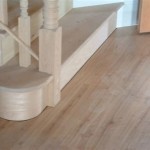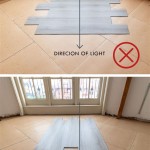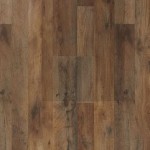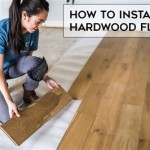Types of Vinyl Flooring for Kitchens
Vinyl flooring has become a prevalent choice for kitchens due to its durability, water resistance, and relatively low cost. It provides a practical and aesthetically versatile solution for one of the most heavily used areas in a home. Understanding the various types of vinyl flooring available is essential for making an informed decision that aligns with specific needs and preferences regarding style, budget, and performance expectations.
The market offers several distinct categories of vinyl flooring, each with unique characteristics. These categories include sheet vinyl, vinyl tile, and vinyl plank, further subdivided into options like luxury vinyl tile (LVT) and luxury vinyl plank (LVP). Evaluating the strengths and weaknesses of each type is critical for determining the most suitable option for a kitchen environment.
Sheet Vinyl Flooring
Sheet vinyl flooring comes in large, continuous rolls, typically 6 or 12 feet wide. This characteristic minimizes the number of seams, contributing significantly to its water resistance. In a kitchen, where spills and splashes are common, this seam-free surface provides a substantial advantage over other flooring types with more joints. The absence of seams reduces the potential for water to seep through and damage the subfloor, preventing mold growth and structural issues.
Installation of sheet vinyl requires careful preparation of the subfloor to ensure a smooth, even surface. Any imperfections in the subfloor can telegraph through the vinyl, affecting the overall appearance. Professional installation is often recommended, particularly for larger kitchens or those with complex layouts. While DIY installation is possible, achieving a flawless, seam-free finish can be challenging for inexperienced individuals.
Sheet vinyl is available in a wide range of designs and patterns, mimicking the look of wood, tile, or stone. The visual quality has improved considerably in recent years, with advanced printing techniques creating realistic textures and vibrant colors. This versatility allows homeowners to achieve the desired aesthetic without the higher cost and maintenance associated with natural materials.
Maintenance of sheet vinyl is straightforward. Regular sweeping or vacuuming keeps the surface free of dirt and debris. Damp mopping with a mild detergent is sufficient for removing spills and stains. Avoid using abrasive cleaners or harsh chemicals, as these can damage the vinyl's surface. With proper care, sheet vinyl can maintain its appearance and performance for many years.
Vinyl Tile Flooring
Vinyl tile flooring consists of individual tiles, typically square or rectangular, that are installed individually. This modular design offers more flexibility in creating custom patterns and designs. Unlike sheet vinyl, if one tile is damaged, it can be replaced without replacing the entire floor. This feature can be particularly beneficial in high-traffic areas like kitchens.
Installation of vinyl tile flooring is generally simpler than sheet vinyl, making it a popular choice for DIY projects. The tiles are typically installed using an adhesive, with peel-and-stick options available for even easier installation. Proper subfloor preparation is still essential, ensuring a clean, level surface for the tiles to adhere to.
Vinyl tiles are available in various thicknesses and constructions, impacting their durability and resistance to wear and tear. Thicker tiles generally offer better resistance to dents and scratches, making them suitable for kitchens with heavy foot traffic or where appliances are frequently moved. The wear layer, a transparent protective coating on the surface of the tile, also plays a crucial role in its longevity.
Grout lines between vinyl tiles can be a potential area for dirt and grime to accumulate. Regular cleaning with a grout brush and appropriate cleaning solutions is necessary to maintain the appearance of the floor. Some vinyl tiles are designed with a faux grout line, simplifying maintenance while still achieving a similar aesthetic.
Within the vinyl tile category, Luxury Vinyl Tile (LVT) stands out as a premium option. LVT offers enhanced durability, realistic designs, and often features a thicker construction than standard vinyl tiles. The increased thickness provides greater comfort underfoot and improved sound insulation. LVT is generally more expensive than standard vinyl tiles but offers a longer lifespan and a more luxurious feel.
Vinyl Plank Flooring
Vinyl plank flooring replicates the look of hardwood flooring, offering a warm and inviting aesthetic for the kitchen. The planks are typically longer and narrower than vinyl tiles, mimicking the dimensions of real wood planks. This format allows for the creation of authentic-looking wood floor patterns, such as staggered rows or herringbone designs.
Similar to vinyl tiles, vinyl planks are installed individually, making them relatively easy to install, especially for DIY enthusiasts. Many vinyl planks feature a click-lock installation system, eliminating the need for adhesives. This system simplifies the installation process and allows for a floating floor, which is not directly attached to the subfloor. A floating floor can be easier to repair or replace if necessary.
The durability of vinyl plank flooring depends on its thickness and the quality of its wear layer. Luxury Vinyl Plank (LVP) is a higher-end version of vinyl plank, offering increased thickness, enhanced realism, and greater resistance to wear and tear. LVP often features embossed textures that mimic the grain of real wood, adding to its authentic appearance.
Vinyl plank flooring is particularly well-suited for kitchens due to its water resistance. While not entirely waterproof, vinyl planks can withstand spills and splashes without warping or damage. However, it is important to clean up spills promptly to prevent them from seeping into the seams between the planks. Some LVP products boast fully waterproof cores, offering even greater protection against water damage.
Maintenance of vinyl plank flooring is similar to sheet vinyl and vinyl tile. Regular sweeping or vacuuming removes dirt and debris, and damp mopping with a mild detergent cleans the surface. Avoid using abrasive cleaners or excessive water, as these can harm the flooring. With proper care, vinyl plank flooring can provide a durable and aesthetically pleasing surface for many years.
When selecting vinyl plank flooring for a kitchen, consider the thickness of the planks and the wear layer. A thicker plank provides greater comfort and durability, while a thicker wear layer offers better protection against scratches and stains. Also, look for products that are specifically designed for high-traffic areas or wet environments.
Comparing the Options
Each type of vinyl flooring for kitchens presents its own advantages and disadvantages. Sheet vinyl offers superior water resistance due to its seamless construction but can be more challenging to install properly. Vinyl tile provides design flexibility and easy replacement of individual tiles but requires more maintenance of the grout lines. Vinyl plank mimics the look of hardwood and is relatively easy to install, but its water resistance is not as complete as sheet vinyl.
The choice between standard vinyl tile/plank and LVT/LVP depends on budget and performance expectations. LVT/LVP offers enhanced durability, realism, and comfort but comes at a higher cost. Standard vinyl tile/plank is a more affordable option but may not offer the same level of performance or aesthetic appeal. The lifespan of the product should also be considered, with LVT/LVP typically offering a longer service life.
The subfloor requirements are generally similar for all types of vinyl flooring. A clean, level, and dry subfloor is essential for proper installation and performance. Any imperfections in the subfloor can affect the appearance and durability of the flooring. Depending on the subfloor material, a leveling compound may be necessary to create a smooth surface.
Ultimately, the best type of vinyl flooring for a kitchen depends on individual needs and preferences. Consider factors such as budget, lifestyle, design style, and maintenance requirements when making a decision. Consulting with a flooring professional can provide valuable insights and help ensure that the chosen flooring is appropriate for the specific kitchen environment.

What Are The Diffe Types Of Vinyl Floors Word Mouth
Choosing Vinyl Flooring For Your Kitchen Tarkett

Types Of Vinyl Flooring The Home Depot

Types Of Vinyl Flooring Explained Twenty Oak

Vinyl Flooring In The Kitchen

Best Flooring For Kitchen Direct

Types Of Vinyl Flooring The Home Depot

Diffe Types Of Vinyl Flooring Tarkett

Best Kitchen Flooring Options For You Forbes Home

Best Colors By Flooring Type Vinyl
Related Posts








